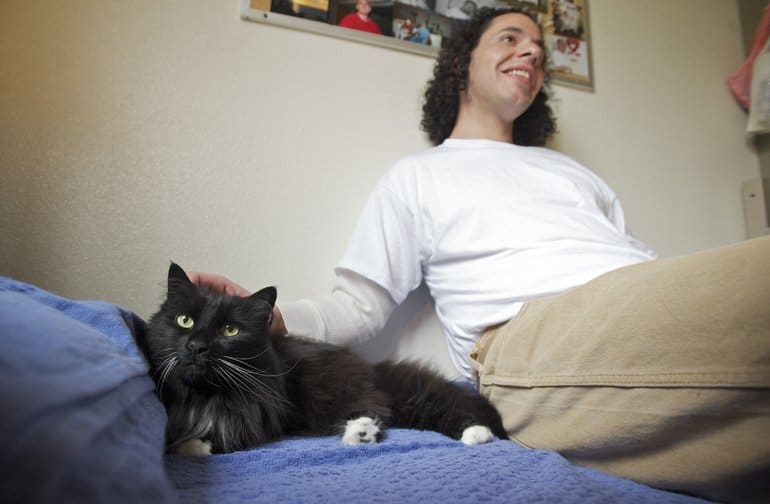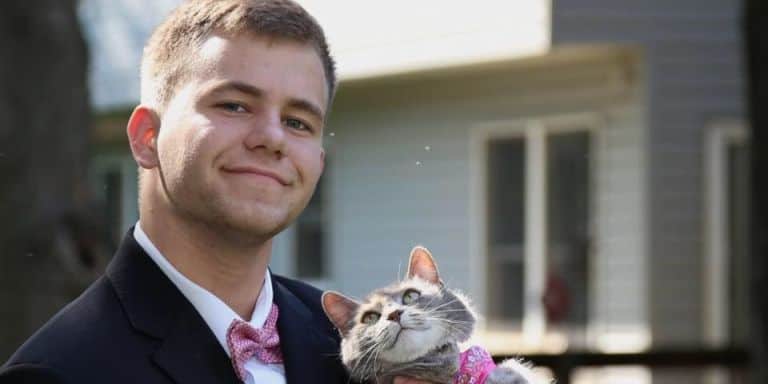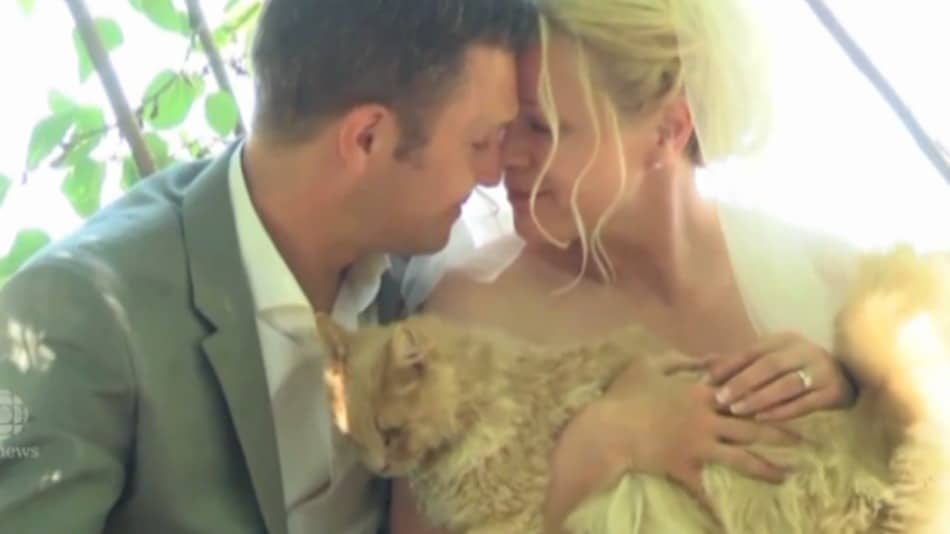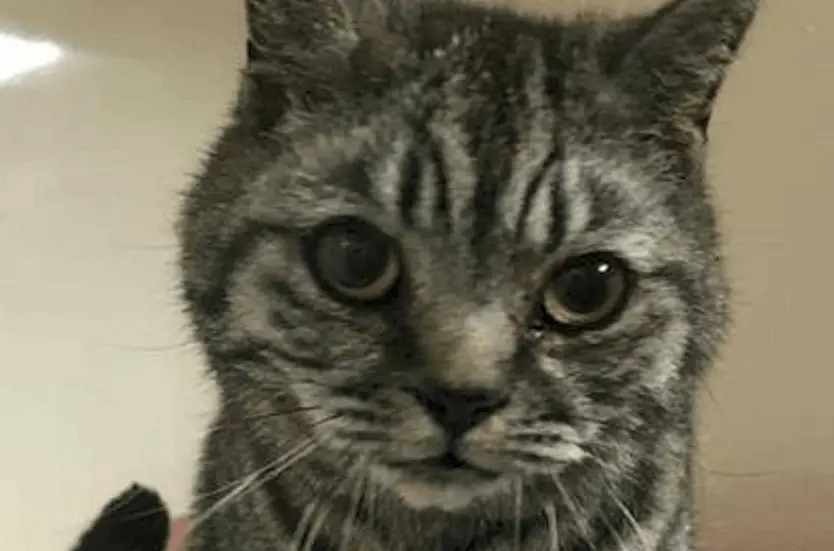Cats are adorable, loving, and, well, occasionally noisy little roommates. But if you’ve noticed your feline friend suddenly yowling at top volume, rolling around like they’re auditioning for a music video, and acting very peculiar, you might have a cat in heat.

For first-time cat parents, this can be confusing and even nerve-wracking. What’s going on with your normally chill kitty? Why do they suddenly seem so restless? Don’t worry—we’re here to explain what it means when a cat goes into heat, what to expect, and how to best support your furry friend during this phase.
Whether you’re curious about how long cats stay in heat or how often they go into heat, this article has all the answers.
What Happens When a Cat Goes Into Heat?
When a cat goes into heat, she experiences a hormonal surge that makes her very interested in finding a mate. While it’s not physically painful for her, the experience can be, well, a little dramatic—for both you and your feline friend. You’ll likely notice some distinct changes in her behavior during this time, and trust us, she’ll make sure you don’t miss them.
For starters, she might suddenly transform into the most affectionate creature on the planet. Expect her to rub up against you, furniture, doorways, and maybe even the family dog. She’s not playing favorites here—she’s just expressing those amped-up hormones. You might also hear a new side of your cat’s vocal range. Think loud, persistent yowling that sounds like feline opera. This is her version of a dating profile—except instead of swiping right, she’s calling out to any potential mates in the neighborhood.
Additionally, don’t be surprised if she starts rolling around on the floor like she’s auditioning for a carpet commercial or strikes unusual postures, like raising her hindquarters in the air (known as “lordosis”). And let’s not forget the escape artist routine—cats in heat often become little Houdinis, darting for open windows or doors in their quest to find a mate.
While her behavior might seem a bit quirky (or downright obnoxious), remember that this is all perfectly natural. If this phase is leaving you wondering how on Earth such a tiny creature can cause such mayhem, just know you’re not alone. The good news is that a spayed cat skips all this drama, so if you’re not ready to deal with the heat (or the kittens), consider talking to your vet about scheduling that procedure. Your cat—and your ears—will thank you later!
To recap:
- Loud Vocalizing: Cats in heat are vocal about it. Those yowls? That’s their mating call!
- Restlessness: Your cat might appear more hyper and unable to settle down.
- Affection Overload: They’ll rub against furniture, walls, and even you more frequently.
- Tail and Posture Changes: Their tail may raise, and they might adopt a specific posture (hindquarters raised, tail to the side) repeatedly.
- Urine Spraying: Female cats may mark their territory by spraying urine containing pheromones.
- Rolling and Flipping: Some cats will roll on the floor excessively.
- Possible Discharge: Though not always noticeable, mild vaginal discharge can occur.
While it’s entirely natural, these symptoms can disrupt your household. But don’t punish your cat for her behavior! She’s simply following her biological programming.
When Do Cats Go Into Heat for the First Time?

Cats usually have their first heat cycle (also called estrus) when they’re around 6 months old. Yep, your sweet little fluffball is growing up fast! Some breeds can start as early as 4 months. If your kitten suddenly starts acting a little, well, extra, it might mean she’s entered her first heat.
Cats are actually seasonal breeders, which means the time of year and even their breed play a role in when they start their heat cycles. For example, some breeds, like Siamese, are known for starting early and going through heat more frequently—overachievers!
💡 Tip: Not ready to deal with kittens? Schedule an appointment with the vet to spay your cat before she reaches 4 months old to avoid her first heat altogether. Your cat can safely be spayed as long as she is at least 2 months old and weighs at least 2 pounds.
How Long Do Cats Stay in Heat?
A single cat heat cycle usually lasts about 4 to 7 days, but this can vary from one female cat to another. If your unspayed cat doesn’t find a mate during her estrus phase, she might be back in heat in as little as two weeks. It can indeed feel like a never-ending estrous cycle!
What Can Affect a Cat’s Heat Duration?
- Age: Younger cats might have shorter or a bit unpredictable cycles at first.
- Mating: If your cat mates during heat, the cycle can end more quickly.
- Health: Health issues can affect how long (or often) these cycles happen.
How Often Do Cats Go Into Heat?
If you’re wondering how often cats go into heat, the answer lies in their biology. Cats are seasonally polyestrous, which is a fancy way of saying they can go into heat multiple times during breeding season (typically spring to early fall). Indoor cats, who are exposed to artificial lighting, can experience heat cycles year-round.
Heat cycles repeat approximately every 2 to 3 weeks. Some cats may cycle constantly if not spayed or bred. Can you imagine dealing with yowls and restlessness every three weeks?

The Health Risks of Constant Heat Cycles
We adore our feline companions, but let’s be real—living with a female cat in constant heat can feel like starring in a 24/7 soap opera filled with yowls, mood swings, and the occasional dramatic roll on the carpet. Beyond the noise and chaos, there are some serious reasons to consider spaying your kitty, especially during the mating season.
Mammary Tumors
Did you know that unspayed female cats are up to seven times more likely to develop mammary tumors than spayed ones? Yup, those tiny furballs can face big health risks if left intact. Spaying your female cat before her first estrus cycle can dramatically reduce the chances of these tumors developing. Think of it as an investment in her health—and your future vet bills.
Pyometra
Here’s a fun word you’d probably rather not learn about—pyometra. It’s a nasty (and potentially life-threatening) infection of the uterus that can happen to unspayed female cats. During their heat cycle, hormonal changes can create the perfect storm for bacterial infections to crash the party. If untreated, it can lead to organ failure, and nobody wants that for their affectionate furry friend.
Unwanted Pregnancies
One unspayed female cat can produce enough kittens in her lifetime to fill a small village—and no, that’s not an exaggeration. Suddenly, you’re not just a cat owner; you’re running a cat daycare during the mating season. Adding to the overwhelming number of homeless cats is a big no-no—and trust us, the costs of food, vet care, and kitten-proofing your house can pile up faster than they can meow.
Behavioral Issues
Unspayed female cats have a flair for drama, often displaying hormonal behaviors during their heat cycle. Expect endless yowling, random sprints, and territorial marking that turns your furniture into their personal canvas. Plus, they can get cranky (who wouldn’t with all that hormonal turbulence?), which might not sit well with your other pets—or your peace of mind.
Spaying isn’t just a win for your cat’s health; it’s a win for you, your home, and maybe even your sleep schedule. Because a happy, healthy female cat makes for a happy, stress-free cat parent—and fewer kitty concerts at 3 a.m.

Tips for Coping With a Cat in Heat
Keeping your female cat calm during her heat cycle doesn’t need to feel like mission impossible. Here are some friendly suggestions to help her (and you!) survive this hormonal rollercoaster.
1. Create a Zen Den
Think of it like a kitty spa day. During the female cat’s heat cycle, keep her environment as calm and stress-free as possible. Loud noises? Nope. Unnecessary chaos? Double nope. Cats love quiet, snug spaces, so set her up with a cozy spot where she can feel safe and chill.
2. Bring the Warmth
A heated blanket or a warm pad can work wonders for your female cat during her heat cycle. It’s like offering her a purr-sonal heating pad—cats find warmth incredibly soothing, especially during this uncomfortable time. Bonus points if she falls asleep on it and gives you a moment of peace!
3. Distract, Distract, Distract
Got toys? Perfect. Bust out those interactive toys or feather wands to keep your female cat occupied and entertained during her heat cycle. If she’s busy chasing and pouncing, she’s less focused on serenading the entire neighborhood with her yowling.
4. Fake It With Pheromones
Synthetic pheromones (think products like Feliway) can help create a calming vibe for female cats during their heat cycle. These sprays or plug-ins mimic their natural pheromones, calming them down a notch.
What Not to Do
- Don’t Punish Your Cat: Your cat isn’t being “bad”; she’s just following her instincts! Sure, the 3 AM yowling might make you consider a second cup of coffee in the morning, but remember, she’s just doing what nature programmed her to do. Punishing her won’t solve the issue—it’ll just confuse her.
- Don’t Let Her Outside: It might be tempting to open the door and hope she runs out her energy, but letting her outside is a big no-no. Outdoor access increases the risk of unwanted pregnancies (hello, kitten explosion!), injuries, and diseases.
When to See a Vet
While most heat cycles are business as usual (cue the serenading yowls), there are times when a vet visit is a smart move.
- Constant Heat: If your cat acts like she’s auditioning for “Heat: The Musical” nonstop, it could be a hormonal issue.
- Weird Discharges: Foul smells or unusual discharge? That’s not normal, and could indicate an infection.
- Spaying: Talk to your vet about when it’s safe to spay her before she turns into a kitten-making machine.
Better safe than sorry—your future, well-rested self will thank you!
Before Your Cat Serenades the Entire Neighborhood…
Understanding the heat cycle is one of the best ways to support your feline friend. From knowing how long cats stay in heat to recognizing the signs, you now have the insights needed to make this phase easier on both you and your pet.
And remember, spaying your cat isn’t just a responsible choice for their health and happiness; it’s also a surefire way to stop those late-night yowls and restore your household’s peace and quiet.
After all, no one enjoys a midnight serenade… especially not your neighbors!
The Catington Post is reader-supported. That means, if you make a purchase through links on our site, we may earn an affiliate commission. All images and names which are not the property of The Catington Post are the property of their respective owners.




